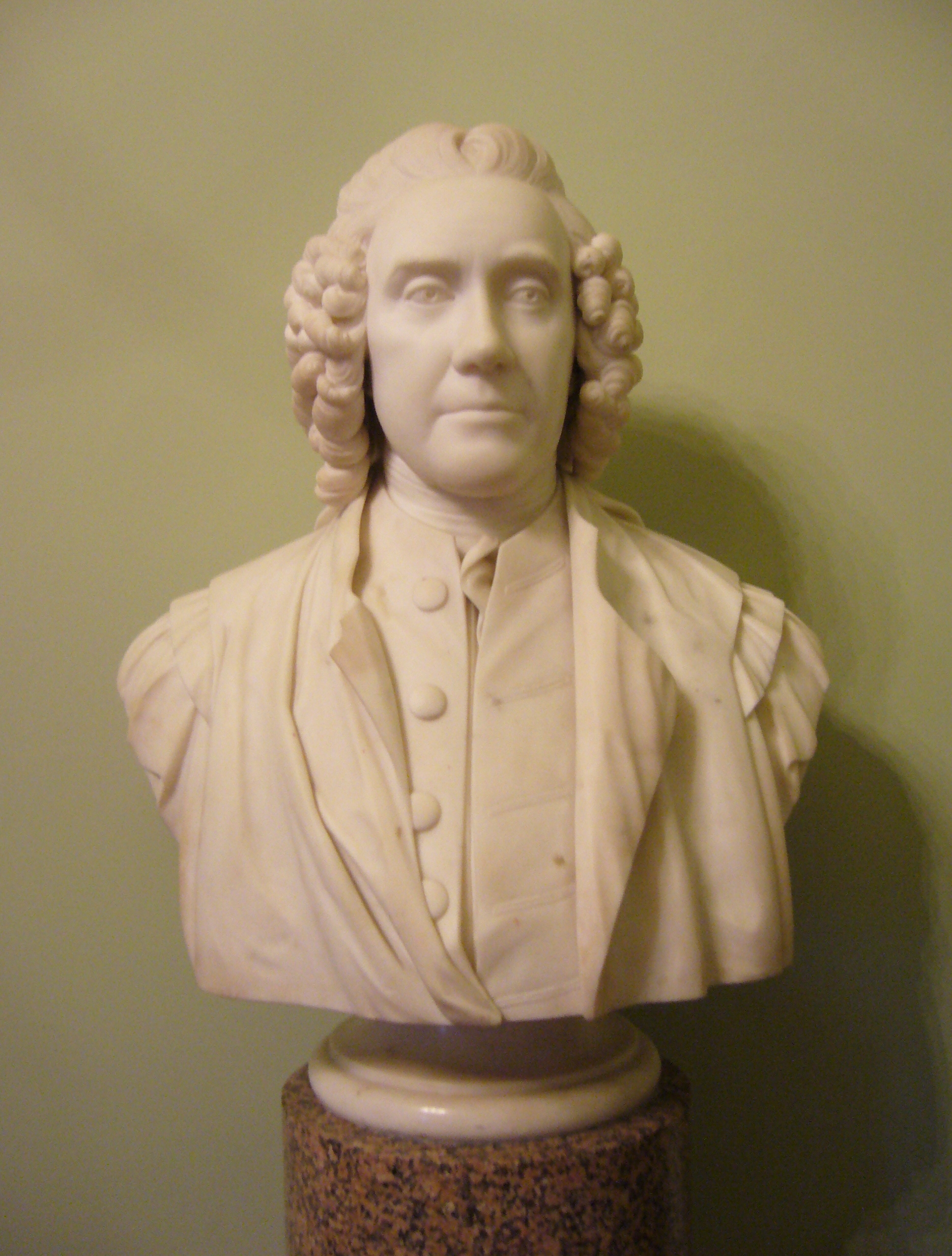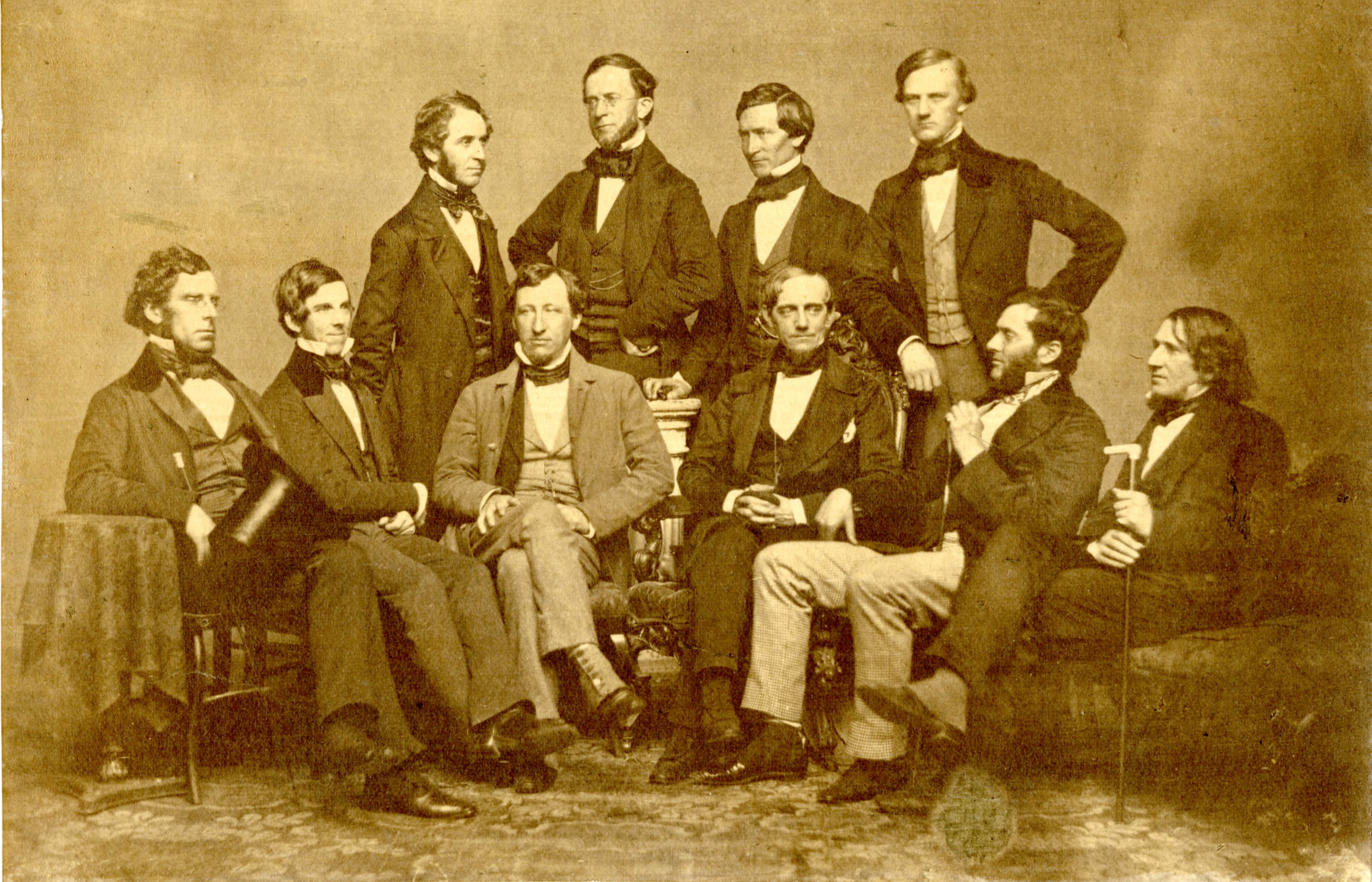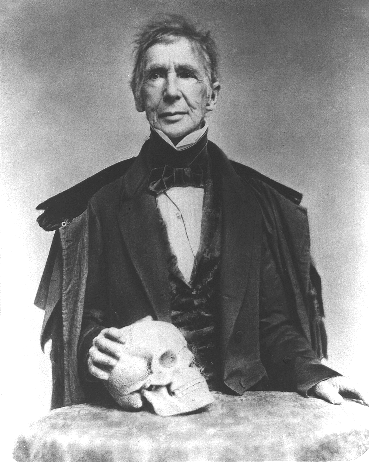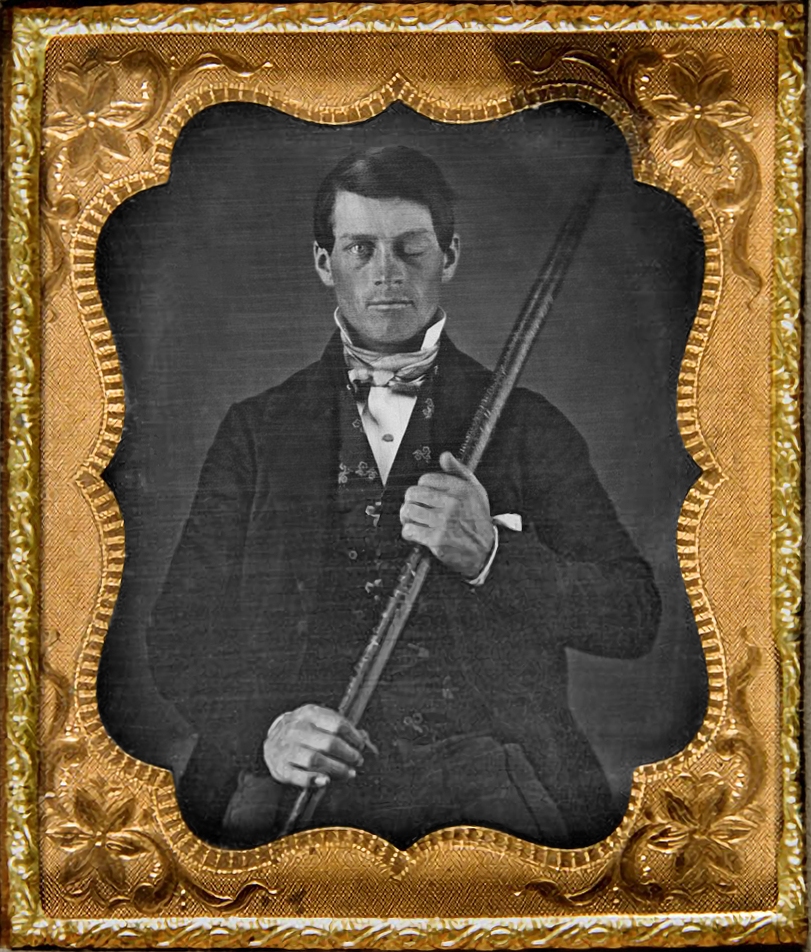|
John Collins Warren
John Collins Warren (August 1, 1778 – May 4, 1856) was an American surgeon. In 1846 he gave permission to William T.G. Morton to provide ether anesthesia while Warren performed a minor surgical procedure. News of this first public demonstration of surgical anesthesia quickly circulated around the world. He was a founder of the New England Journal of Medicine and was the third president of the American Medical Association. He was the first Dean of Harvard Medical School and a founding member of the Massachusetts General Hospital. Biography Born in Boston, he was the son of John Warren, well-known doctor, Harvard professor, and a founder of the Harvard Medical School and the nephew of Dr. Joseph Warren. He graduated from Harvard College in 1797, then began the study of medicine with his father. In 1799, he continued his medical studies in London and Paris and Edinburgh, including work with the pioneer anatomist Sir Astley Cooper (1768–1841). He graduated with an M.D. from th ... [...More Info...] [...Related Items...] OR: [Wikipedia] [Google] [Baidu] |
Boston
Boston (), officially the City of Boston, is the state capital and most populous city of the Commonwealth of Massachusetts, as well as the cultural and financial center of the New England region of the United States. It is the 24th- most populous city in the country. The city boundaries encompass an area of about and a population of 675,647 as of 2020. It is the seat of Suffolk County (although the county government was disbanded on July 1, 1999). The city is the economic and cultural anchor of a substantially larger metropolitan area known as Greater Boston, a metropolitan statistical area (MSA) home to a census-estimated 4.8 million people in 2016 and ranking as the tenth-largest MSA in the country. A broader combined statistical area (CSA), generally corresponding to the commuting area and including Providence, Rhode Island, is home to approximately 8.2 million people, making it the sixth most populous in the United States. Boston is one of the oldest ... [...More Info...] [...Related Items...] OR: [Wikipedia] [Google] [Baidu] |
University Of Edinburgh Medical School
The University of Edinburgh Medical School (also known as Edinburgh Medical School) is the medical school of the University of Edinburgh in Scotland and the United Kingdom and part of the College of Medicine and Veterinary Medicine. It was established in 1726, during the Scottish Enlightenment, making it the oldest medical school in the United Kingdom and is one of the oldest medical schools in the English-speaking world. It is widely regarded as one of the best medical schools in the United Kingdom and the world. The medical school in 2022 was ranked 1st in the UK by the Guardian University Guide, In 2021, it was ranked third in the UK by The Times University Guide, and the Complete University Guide. It also ranked 21st in the world by both the Times Higher Education World University Rankings and the QS World University Rankings in the same year. According to a Healthcare Survey run by Saga in 2006, the medical school's main teaching hospital, the Royal Infirmary of Edinburgh, ... [...More Info...] [...Related Items...] OR: [Wikipedia] [Google] [Baidu] |
Emily Appleton
Emily Appleton ( Warren; May 10, 1818 – May 29, 1905) was an American philanthropist and animal welfare activist from Boston who provided financial support for the foundation of the Massachusetts Society for the Prevention of Cruelty to Animals in 1868. Appleton was already nurturing an American anti-animal cruelty movement when she saw a letter in the ''Boston Daily Advertiser'' from George Thorndike Angell protesting animal cruelty. Within a month, with Appleton's backing, Angell incorporated the society. Appleton, like fellow female activist Caroline Earle White (who was active in Philadelphia), was excluded from executive participation in the society she helped found. She was the daughter of noted surgeon John Collins Warren, who founded the ''New England Journal of Medicine ''The New England Journal of Medicine'' (''NEJM'') is a weekly medical journal published by the Massachusetts Medical Society. It is among the most prestigious peer-reviewed medical journals a ... [...More Info...] [...Related Items...] OR: [Wikipedia] [Google] [Baidu] |
Jonathan Mason Warren
Jonathan Mason Warren (February 5, 1811August 19, 1867) was a prominent Boston physician, believed to have been the first to administer anesthesia to a child during surgery. He was the son of John Collins Warren. Warren received a medical degree from Harvard College in 1832. After studying surgery in Europe for three years, hereturned to Boston in 1835 where he worked in general practice. He specialized in reconstructive surgery; he was one of the first surgeons to perform rhinoplasty operations in the United States, and developed ways to close cleft palate A cleft lip contains an opening in the upper lip that may extend into the nose. The opening may be on one side, both sides, or in the middle. A cleft palate occurs when the palate (the roof of the mouth) contains an opening into the nose. The ... through surgery. Sources *https://collections.countway.harvard.edu/onview/exhibits/show/family-practice/j--mason-warren--1811-1867- *https://collections.countway.harvard.edu/on ... [...More Info...] [...Related Items...] OR: [Wikipedia] [Google] [Baidu] |
Pericarditis
Pericarditis is inflammation of the pericardium, the fibrous sac surrounding the heart. Symptoms typically include sudden onset of sharp chest pain, which may also be felt in the shoulders, neck, or back. The pain is typically less severe when sitting up and more severe when lying down or breathing deeply. Other symptoms of pericarditis can include fever, weakness, palpitations, and shortness of breath. The onset of symptoms can occasionally be gradual rather than sudden. The cause of pericarditis often remains unknown but is believed to be most often due to a viral infection. Other causes include bacterial infections such as tuberculosis, uremic pericarditis, heart attack, cancer, autoimmune disorders, and chest trauma. Diagnosis is based on the presence of chest pain, a pericardial rub, specific electrocardiogram (ECG) changes, and fluid around the heart. A heart attack may produce similar symptoms to pericarditis. Treatment in most cases is with NSAIDs and possibly the ant ... [...More Info...] [...Related Items...] OR: [Wikipedia] [Google] [Baidu] |
Thomas Dwight
Thomas Dwight (1843–1911) was an American physician, anatomist and teacher. Life Thomas Dwight was born on October 13, 1843, in Boston, Massachusetts. His father was also named Thomas Dwight (born September 27, 1807 – 1876 ), part of the New England Dwight family. His mother was Mary Collins Warren (b. Jan 19, 1816-Oct 22. 1900 ), whose father John Collins Warren (1778 –1856), and grandfather John Warren (1753–1815) were both surgeons. Dwight joined the Catholic Church in 1856, and graduated from the Harvard Medical School in 1867. After studying abroad, he was instructor in comparative anatomy at Harvard College, 1872–1873, he also lectured at Bowdoin College. He succeeded Oliver Wendell Holmes, Sr. as Parkman professor of anatomy at Harvard Medical School in 1883. In the Warren Museum of Anatomy at Harvard, Dwight arranged a section of osteology, considered one of the best in existence, and he had an international reputation as an anatomist. Among his writings are ... [...More Info...] [...Related Items...] OR: [Wikipedia] [Google] [Baidu] |
John Collins Warren Daguerreotype Circa 1855
John is a common English name and surname: * John (given name) * John (surname) John may also refer to: New Testament Works * Gospel of John, a title often shortened to John * First Epistle of John, often shortened to 1 John * Second Epistle of John, often shortened to 2 John * Third Epistle of John, often shortened to 3 John People * John the Baptist (died c. AD 30), regarded as a prophet and the forerunner of Jesus Christ * John the Apostle (lived c. AD 30), one of the twelve apostles of Jesus * John the Evangelist, assigned author of the Fourth Gospel, once identified with the Apostle * John of Patmos, also known as John the Divine or John the Revelator, the author of the Book of Revelation, once identified with the Apostle * John the Presbyter, a figure either identified with or distinguished from the Apostle, the Evangelist and John of Patmos Other people with the given name Religious figures * John, father of Andrew the Apostle and Saint Peter * Pope J ... [...More Info...] [...Related Items...] OR: [Wikipedia] [Google] [Baidu] |
Southworth & Hawes
Southworth & Hawes was an early photographic firm in Boston, 1843–1863. Its partners, Albert Sands Southworth (1811–1894) and Josiah Johnson Hawes (1808–1901), have been hailed as the first great American masters of photography, whose work elevated photographic portraits to the level of fine art. Their images are prominent in every major book and collection of early American photography. Southworth & Hawes worked almost exclusively in the daguerreotype process. Working in the 8 ½ x 6 ½ inch ''whole plate'' format, their images are brilliant, mirror-like, and finely detailed. Writing in the ''Photographic and Fine Art Journal'', August 1855, the contemporary Philadelphia daguerreotypist Marcus Aurelius Root paid them this praise: "Their style, indeed, is peculiar to themselves; presenting beautiful effects of light and shade, and giving depth and roundness together with a wonderful softness or mellowness. These traits have achieved for them a high reputation with all true ... [...More Info...] [...Related Items...] OR: [Wikipedia] [Google] [Baidu] |
Horace Wells
Horace Wells (January 21, 1815 – January 24, 1848) was an American dentist who pioneered the use of anesthesia in dentistry, specifically the use of nitrous oxide (or laughing gas). Early life Wells was the first of three children of Horace and Betsy Heath Wells, born on January 21, 1815 in Hartford, Vermont. His parents were well-educated and affluent land owners, which allowed him to attend private schools in New Hampshire and Amherst, Massachusetts. At the age of 19 in 1834, Wells began studying dentistry under a two-year apprenticeship in Boston. The first dental school did not open until 1840 in Baltimore. At age 23, Wells published a booklet "An Essay on Teeth" in which he advocated for his ideas in preventive dentistry, particularly for the use of a toothbrush. In his booklet, he also described tooth development and oral diseases, where he mentioned diet, infection, and oral hygiene as important factors. After obtaining a degree, Wells set up a practice in Hartf ... [...More Info...] [...Related Items...] OR: [Wikipedia] [Google] [Baidu] |
Southworth & Hawes - First Etherized Operation (re-enactment) – an early photographic firm in Boston.
{{disambiguation ...
Southworth may refer to: People * Southworth (surname) Places * Southworth, Ohio, an unincorporated community * Southworth, Washington – unincorporated community on Puget Sound in Kitsap County, Washington * Point Southworth – on Kitsap Peninsula on the western side of the northern entrance to Colvos Passage in Puget Sound * Southworth Creek, a stream in Oregon Others uses * Southworth & Hawes Southworth & Hawes was an early photographic firm in Boston, 1843–1863. Its partners, Albert Sands Southworth (1811–1894) and Josiah Johnson Hawes (1808–1901), have been hailed as the first great American masters of photography, whose work ... [...More Info...] [...Related Items...] OR: [Wikipedia] [Google] [Baidu] |
Warren Anatomical Museum
The Warren Anatomical Museum, housed within Harvard Medical School's Countway Library of Medicine, was founded in 1847 by Harvard professor John Collins Warren, whose personal collection of 160 unusual and instructive anatomical and pathological specimens now forms the nucleus of the museum's 15,000-item collection. The Warren also has objects significant to medical history, such as the inhaler used during the first public demonstration of ether-assisted surgery in 1846 (on loan to the Massachusetts General Hospital since 1948), and the skull of Phineas Gage, who survived a large iron bar being driven through his brain. The museum's first curator was J.B.S. Jackson. Closed until 2022 The museum gallery is closed for renovation until 2022, although the collection remains accessible to researchers by appointment. Normally a rotating subset of items, including Gage's skull and the tamping iron that passed through it, is on public display. __NOTOC__ See also * William Fiske Whitney ... [...More Info...] [...Related Items...] OR: [Wikipedia] [Google] [Baidu] |





